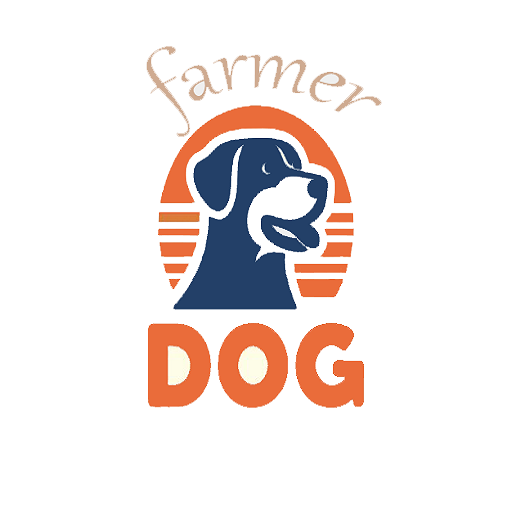Is Open Farm Dog Food a Good Choice for Your Canine Companion?
Choosing the right dog food can be a daunting task for pet owners. With countless brands and formulations vying for attention, it’s crucial to understand the factors that contribute to a dog’s nutritional needs and the potential benefits and drawbacks of different options. Open Farm, a relatively newer player in the pet food market, has gained some traction, but is it a truly beneficial choice for your furry friend? This article delves into the specifics of Open Farm dog food, exploring its ingredients, nutritional profile, potential benefits, and drawbacks to help you make an informed decision.

Understanding Open Farm’s Approach to Dog Food
Open Farm positions itself as a brand committed to providing high-quality, natural dog food. Their marketing often emphasizes ingredients sourced from farms, highlighting sustainable practices and a focus on whole foods. However, the “natural” claim, while appealing, requires careful scrutiny, as the definition can vary. This section will explore the core tenets of Open Farm’s philosophy and how they translate to the final product.
Ingredients and Nutritional Composition: A Closer Look
Open Farm’s ingredient lists vary depending on the specific formula. While some formulations might feature recognizable, wholesome ingredients like chicken or lamb, others might incorporate less familiar or less desirable proteins. Crucially, pet owners should carefully examine the ingredient list, prioritizing proteins like meat, poultry, and fish as the first or second ingredients. A high percentage of fillers like grains or potatoes could indicate a less nutritious option. The nutritional content, including protein, fat, fiber, and essential vitamins and minerals, needs to be appropriate for a dog’s age, breed, and activity level. A complete and balanced formula is essential for optimal health and development.
Analyzing the Protein Source and Quality
The source of protein is a critical component of any dog food. Open Farm, like many brands, sources protein from various animal sources. However, the quality of the protein can vary significantly. A well-sourced protein is easily digestible, providing the building blocks for muscle growth, repair, and overall bodily function. A poor-quality protein might lead to digestive issues or deficiencies. Analyzing the specific protein sources used in Open Farm’s formulations is crucial for determining the nutritional value. Is the protein a complete source, meaning it contains all essential amino acids? Is it sourced responsibly, minimizing potential ethical concerns or environmental impacts?
Digestibility and Potential Issues
Digestibility is another crucial factor to consider. A food that is difficult to digest can lead to various issues, including stomach upset, diarrhea, and poor nutrient absorption. Open Farm, like any other brand, should provide information on the digestibility of its ingredients. While some dogs might tolerate a particular formula, others may experience digestive problems. This is often case-dependent and depends on the individual dog’s physiology. Observing your dog’s stool consistency and overall demeanor after introducing a new food is essential for assessing its suitability.
Comparing Open Farm with Other Brands
Comparing Open Farm to other premium and budget-friendly brands is vital for perspective. A thorough analysis should include ingredient lists, nutritional profiles, and customer reviews. This comparative approach helps to understand Open Farm’s positioning within the market and its strengths and weaknesses in terms of value for money. Are the claims made by Open Farm supported by independent research or third-party certifications?
Real-World Examples and Case Studies
While comprehensive scientific studies on Open Farm are scarce, anecdotal evidence from pet owners can provide valuable insights. Online forums, social media groups, and pet owner communities can offer firsthand accounts of dogs’ experiences with Open Farm products. However, it’s essential to remember that individual responses to dog food can vary significantly, so testimonials should be considered as part of a larger picture.
Addressing Potential Concerns
One potential concern with Open Farm, like many brands emphasizing “natural” ingredients, is the lack of transparency regarding specific manufacturing processes. This includes details about ingredient sourcing, processing methods, and potential use of artificial preservatives or additives. A lack of information might make it challenging to assess the food’s overall safety and quality.
Nutritional Needs and Individual Considerations
A dog’s nutritional needs are influenced by factors such as age, breed, activity level, and any underlying health conditions. Open Farm, like other brands, may not cater to all these specific needs. For instance, a growing puppy has different nutritional requirements compared to a senior dog. A dog with allergies or sensitivities might require a specialized diet. It’s crucial to consider these individual needs when evaluating the suitability of Open Farm products.
Conclusion: Making an Informed Decision
Open Farm dog food presents a range of options for pet owners seeking a natural approach to canine nutrition. However, a thorough assessment of ingredients, nutritional content, digestibility, and potential drawbacks is essential. Comparing Open Farm with other brands and considering individual dog needs are crucial steps in making an informed decision. While anecdotal evidence can offer insights, consulting with a veterinarian is always recommended to determine the optimal diet for your specific dog. Ultimately, the best dog food is one that supports your dog’s health and well-being, and careful consideration of all factors is paramount.
